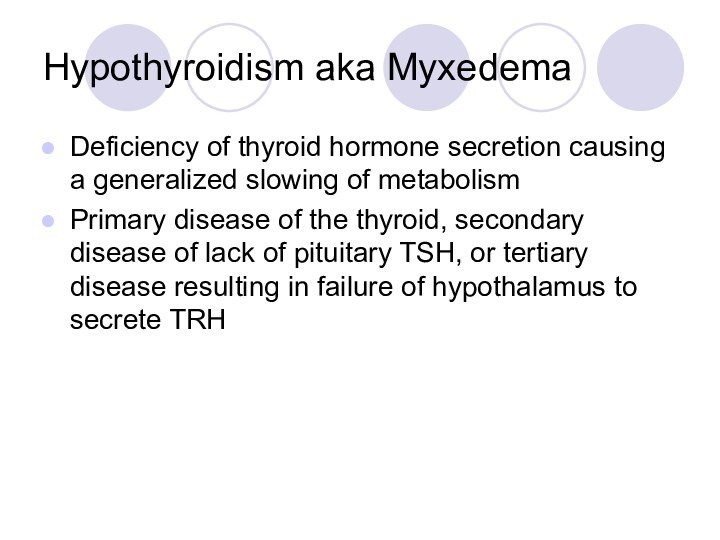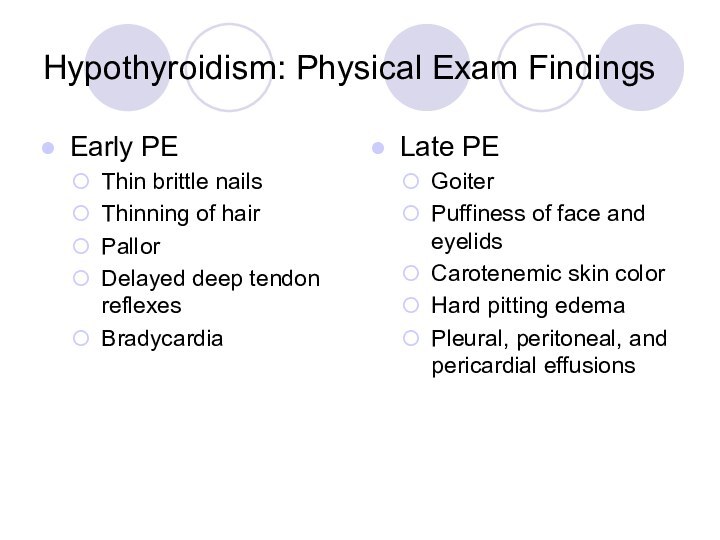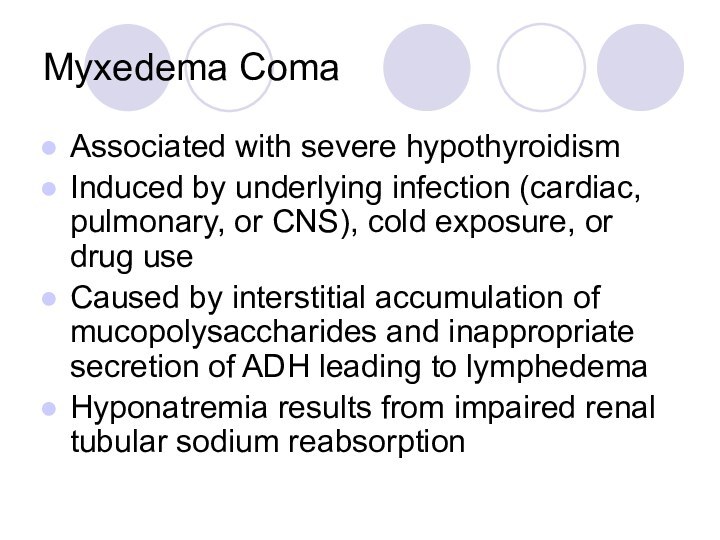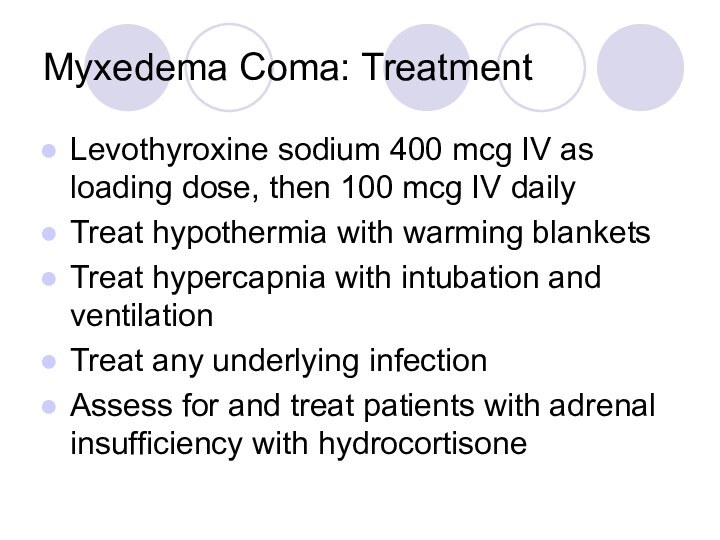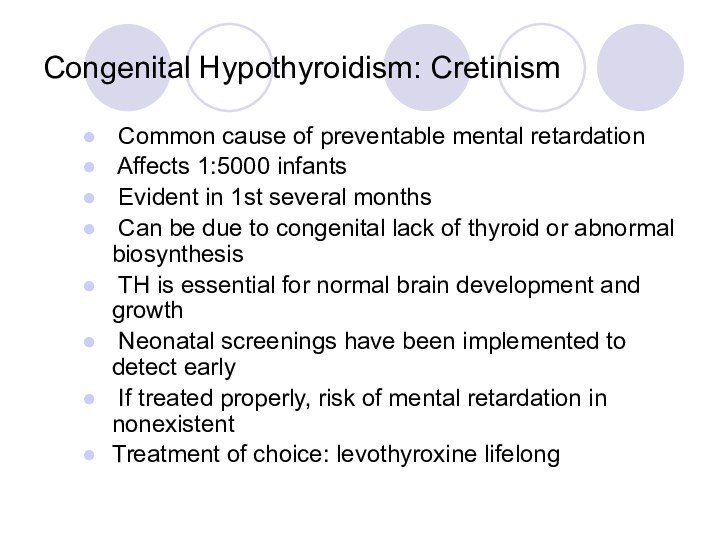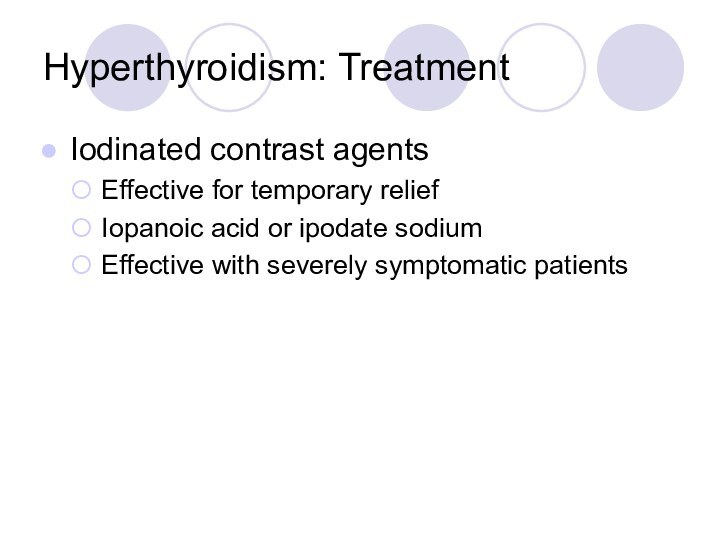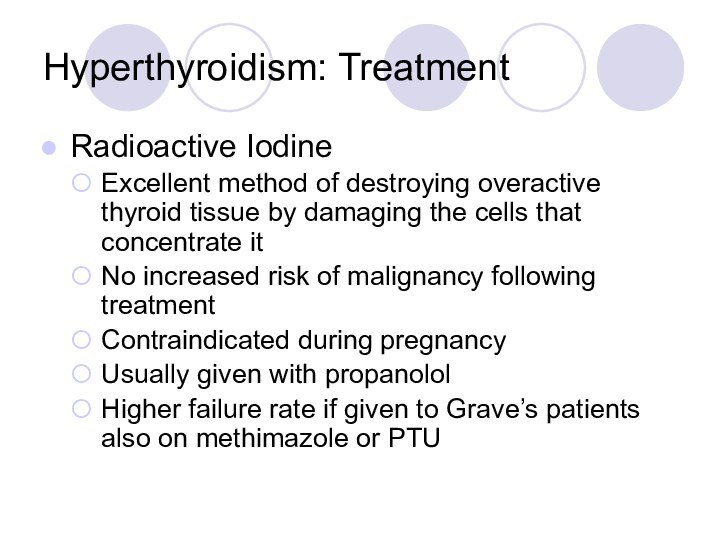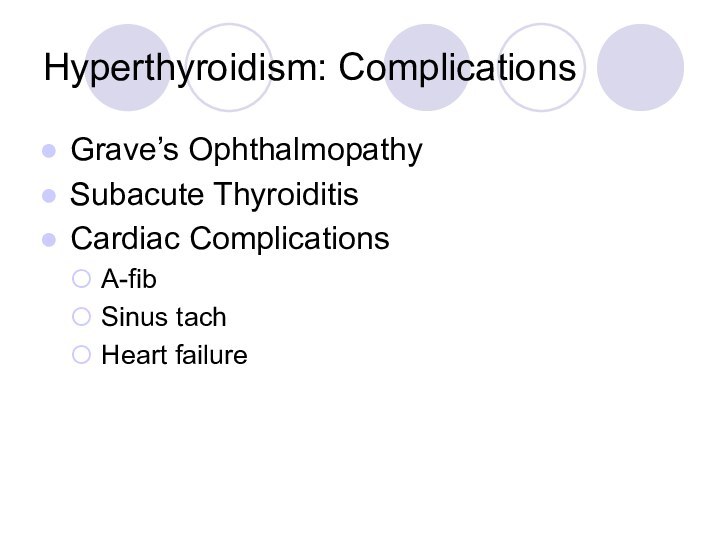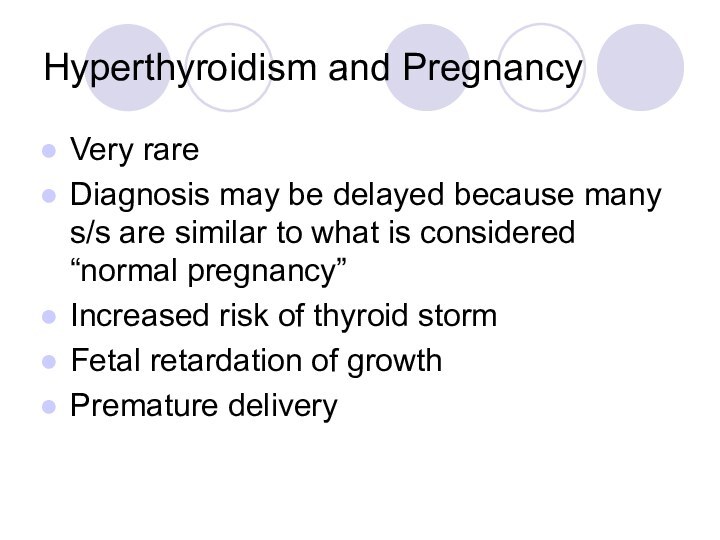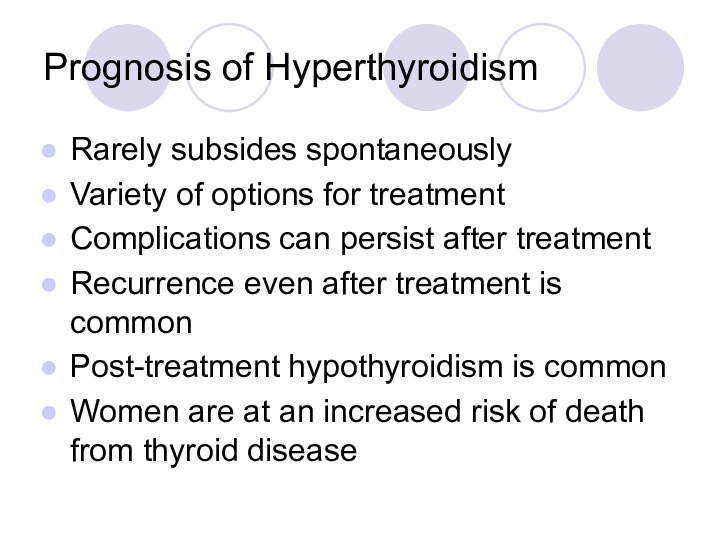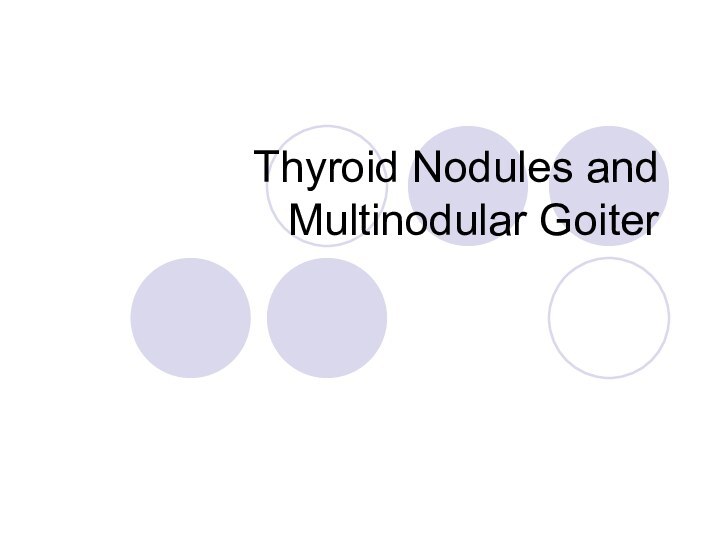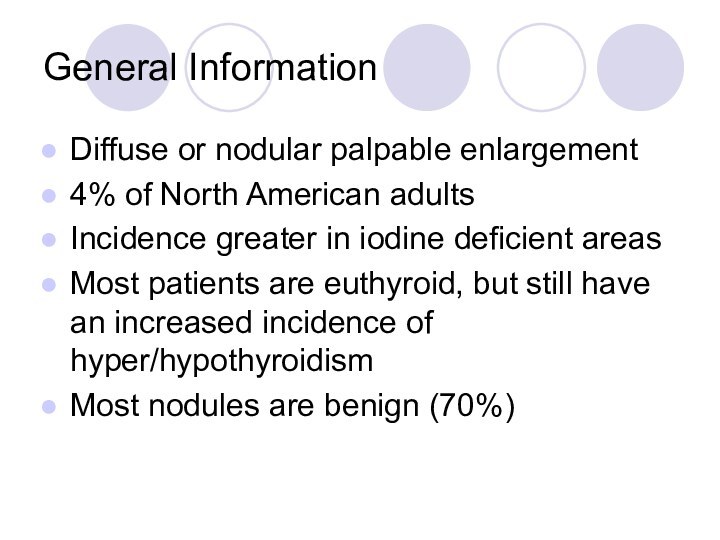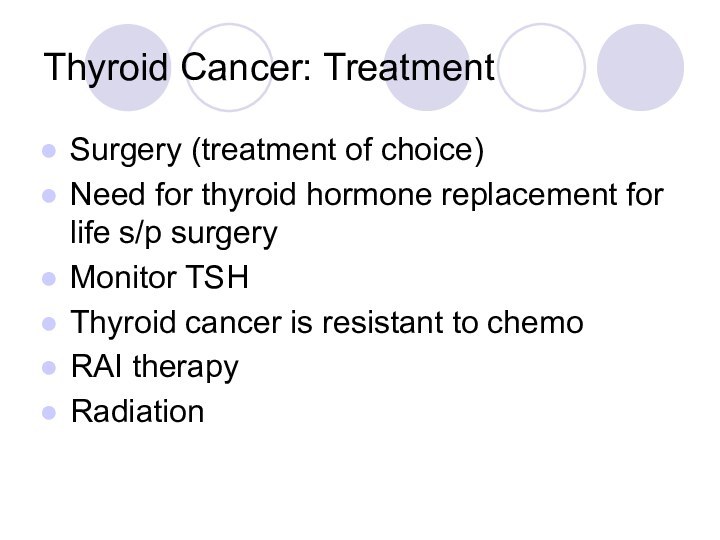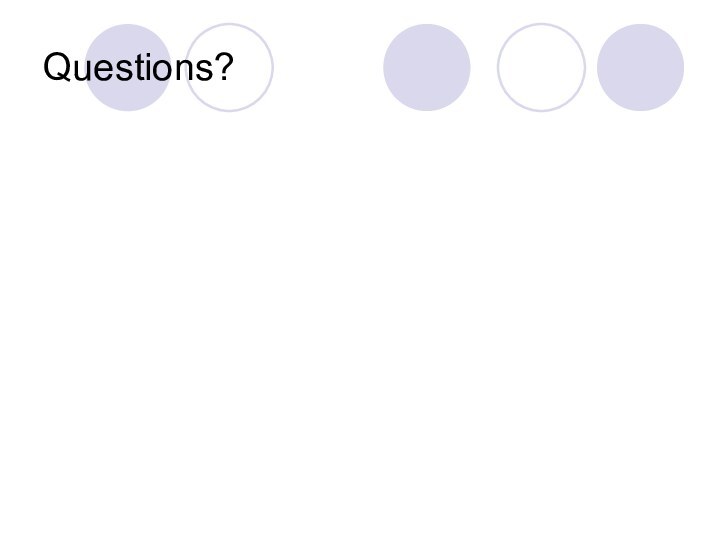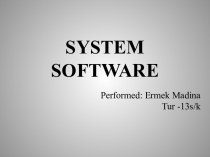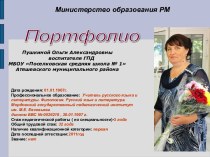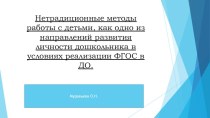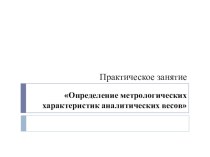Слайд 2
Review: Thyroid
Gland comprised of two lobes spanning the
trachea
Produces thyroxine (T4) and triiodothyronine (T3)
T4 is produced only
in the thyroid
20-25% of T3 is secreted by the thyroid, the rest is formed by deiodination of T4
Слайд 3
Role of Thyroid Hormones
Stimulate neural and skeletal development
during fetal life
Stimulate oxygen consumption at rest and bone
turnover
Increase GI motility
Increase heart rate and contractility
Maintain basal body temperature
Increase production of RBC’s
Control respiratory drive
Increase metabolism
Слайд 5
Thyroid Hormone Secretion
Regulated by a feedback system involving
the hypothalamus, pituitary gland, and thyroid gland
TRH (thyrotropin-releasing hormone)
is secreted by the hypothalamus
This stimulates the synthesis and release of TSH from the anterior pituitary
Слайд 6
Thyroid Hormone Secretion
TSH stimulates the thyroid gland to
produce T3 and T4
T3 and T4 directly inhibit the
pituitary TSH secretion
Negative feedback will increase free thyroid hormones that cause a decrease in TSH secretion and vice versa
Becomes very useful in evaluating signs and symptoms of thyroid disease
Слайд 7
Hypothyroidism aka Myxedema
Deficiency of thyroid hormone secretion causing
a generalized slowing of metabolism
Primary disease of the thyroid,
secondary disease of lack of pituitary TSH, or tertiary disease resulting in failure of hypothalamus to secrete TRH
Слайд 8
Hypothyroidism
Most common cause- Hashimoto’s Thyroiditis (aka Chronic Lymphocytic
Thyroiditis)
Also caused by iodine deficiency, thyroid ablation, radiation, medications,
adenomas, pituitary destruction, sarcoidosis
Amiodarone (due to high concentration of iodine in the drug)
Hepatitis C patients (due to administration of interferon during treatment)
Слайд 9
Hypothyroidism: Signs and Symptoms
Early S/S
Lethargy
Weakness
Cold intolerance
Constipation
Dry Skin
Menorrhagia
Depression
Mild weight
gain
Late S/S
Slowed speech
Lack of sweating
Peripheral edema
Hoarseness
Decreased sense of
taste and smell
Increased weight gain
Слайд 10
Hypothyroidism: Physical Exam Findings
Early PE
Thin brittle nails
Thinning of
hair
Pallor
Delayed deep tendon reflexes
Bradycardia
Late PE
Goiter
Puffiness of face and eyelids
Carotenemic
skin color
Hard pitting edema
Pleural, peritoneal, and pericardial effusions
Слайд 11
Goiter
Diffuse enlargement of the thyroid
Associated with hypothyroidism caused
by Hashimoto’s, iodine deficiency, genetic thyroid enzyme defects, or
drugs
Hypothyroid phase that occurs in subacute viral thyroiditis
Слайд 12
Hashimoto’s Thyroiditis
Presents with enlarged tender thyroid gland
Positive
thyroid antibodies
Increased TSH
Can resolve on its own, but mostly
treated with synthetic thyroxine
Слайд 13
Hypothyroidism: Differential Diagnosis
Any other condition causing unexplained menstrual
abnormalities, myalgias, constipation, weight changes, hyperlipidemia, or anemia
Myxedema added
into DDX of unexplained CHF without relief from traditional medical therapy
Unexplained ascites
Depression and psychosis
Pituitary adenomas
Слайд 14
Primary Hypothyroidism: Labs
Increased TSH (normal 0.4-5.5)
Overt: TSH increased,
free T4 low: treat
Subclinical: TSH increased: free T4 normal:
subclinical, treat if symptomatic or TSH over 10, controversial
Antibody titers of thyroperoxidase and thyroglobulin increased in Hashimoto’s
May also see increased cholesterol
Nonspecific findings such as increased LFT’s, anemia, hyponatremia, hypoglycemia, increased creatine kinase
Слайд 15
Hypothyroidism: Treatment
Treatment of choice is levothyroxine
Dosing is
typically calculated at 1.6mcg/kg/day
Starting doses vary depending on age,
pregnancy, and other comorbidities, usually start with 50-100 mcg
Start low, go slow with elderly (25 mcg)
Early treatment has a very good outcome
Overt: TSH increased, free T4 low: treat
Subclinical: TSH increased: free T4 normal: subclinical, treat if symptomatic or TSH over 10, controversial
Patients taking same daily dose demonstrate a significant increase in serum T4 levels within 1-2 weeks and near peak in 3-4 weeks
Слайд 16
Hypothyroidism: Treatment
Monitor labs after 1 month, then 3
months, then every 6 months to evaluate efficacy of
maintenance dose and need for dose adjustment
Relapse can occur if treatment is interrupted
Maintenance dose varies between 75-250mcg
Слайд 17
Hypothyroidism: Complications
Mostly cardiac in nature secondary to overzealous
thyroid replacement
Increased susceptibility to infection
Psychosis
Miscarriage in pregnancy
TSH secreting tumors
Myxedema
Coma
Слайд 18
Myxedema Coma
Associated with severe hypothyroidism
Induced by underlying infection
(cardiac, pulmonary, or CNS), cold exposure, or drug use
Caused
by interstitial accumulation of mucopolysaccharides and inappropriate secretion of ADH leading to lymphedema
Hyponatremia results from impaired renal tubular sodium reabsorption
Слайд 19
Myxedema Coma
Sx- hypothermia, hypoventilation, hyponatremia, hypoxia, hypercapnia, hypotension,
convulsions, and CNS signs
Mostly seen in elderly women
High mortality
rate, medical emergency
Слайд 20
Myxedema Coma: Treatment
Levothyroxine sodium 400 mcg IV as
loading dose, then 100 mcg IV daily
Treat hypothermia with
warming blankets
Treat hypercapnia with intubation and ventilation
Treat any underlying infection
Assess for and treat patients with adrenal insufficiency with hydrocortisone
Слайд 21
Hypothyroidism and Pregnancy
Critical to treat mother early on
as fetus depends on T4 from mother for CNS
development
Maternal hypothyroidism in 1st Trimester has shown to cause some developmental delays
Follow mother with TSH levels every 4-6 weeks
Tight control with narrower window in pregnancy
Слайд 22
Hypothyroidism and Pregnancy
Dosing of levothyroxine is variable
Women who
are already hypothyroid before pregnancy typically need a dose
increase of 30% once pregnancy is confirmed
Typically return to their original dose post-partum
Слайд 23
Congenital Hypothyroidism: Cretinism
Common cause of preventable mental
retardation
Affects 1:5000 infants
Evident in 1st several months
Can be due to congenital lack of thyroid or abnormal biosynthesis
TH is essential for normal brain development and growth
Neonatal screenings have been implemented to detect early
If treated properly, risk of mental retardation in nonexistent
Treatment of choice: levothyroxine lifelong
Слайд 24
Cretinism
Parents will report:
Feeding problems
Somnolence
Jaundice
Flaccidity
Constipation
Developmental delays
Child will present with:
Broad
flat nose
Protruding tongue
Protruding abdomen
Development of goiter
Umbilical hernia
Delayed growth, short
stature
Developmental delays
Слайд 27
Hyperthyroidism aka Thyrotoxicosis
Involves an increase of thyroid hormone
Increased
rate of metabolism
Most common cause is Grave’s Disease
Autoimmune
Gland is
usually enlarged
Mostly women (8:1 ratio to men)
Onset between 20-40 years of age
Familial tendency
Слайд 28
Hyperthyroidism
Commonly associated with DM, myasthenia gravis, and
pernicious anemia
Grave’s patients are at an increased risk of
developing Addison’s disease, alopecia areata, celiac disease, DM I, myasthenia gravis, cardiomyopathy, and hypokalemic periodic paralysis
Слайд 29
Hyperthyroidism Grave’s disease
Accompanied by infiltrative ophthalmopathy (exophthalmus) and
pretibial myxedema
Grave’s demonstrates positive antibodies on thyroid panel
Слайд 30
Other Causes of Hyperthyroidism
Most common cause-Grave’s Disease
Toxic adenomas
Subacute thyroiditis
Thyrotoxicosis factitia
Medications, especially amiodarone
Also pituitary tumor, pregnancy, thyroid
cancer
Слайд 31
Hyperthyroidism: Signs and Symptoms
Symptoms
Nervousness
Restlessness
Heat intolerance
Muscle cramps
Frequent bowel movements
Weight
changes (mostly loss)
Palpitations
Angina
Menstrual irregularities
Physical Exam Findings
Stare
Lid lag
Fine resting tremor
Moist
warm skin
Hyperreflexia
Fine hair
A-fib
Ophthalmopathy
Слайд 32
Hyperthyroidism: Differential Diagnosis
Anxiety or mania
Anemia, leukemia, polycythemia
Pheochromocytoma
Acromegaly
True cardiac
arrythmias
Myasthenia gravis
Слайд 33
Primary Hyperthyroidism: Labs
Decreased TSH, usually less than 0.1
Increased
T3, T4, thyroid resin uptake, Free T4
Increased RAI uptake
in Grave’s
Слайд 34
Hyperthyroidism: Treatment
Often treated by endocrinology upon initial diagnosis
Varies
according to age and severity
Propanolol
Symptomatic relief of tremor, tachycardia,
diaphoresis, and anxiety
Used until hyperthyroidism definitively treated
Also treatment of choice for thyroid storm
Слайд 35
Hyperthyroidism: Treatment
Thiourea Drugs
Methimazole or Propylthiouracil (PTU)
Used for young
adults or patients with mild hyperthyroidism, small goiters, or
those who do not want isotope therapy
Can be administered long term
Lower occurrence of post-treatment hypothyroid than with surgery or RAI
PTU is drug of choice during lactation and pregnancy
Слайд 36
Hyperthyroidism: Treatment
Iodinated contrast agents
Effective for temporary relief
Iopanoic acid
or ipodate sodium
Effective with severely symptomatic patients
Слайд 37
Hyperthyroidism: Treatment
Radioactive Iodine
Excellent method of destroying overactive thyroid
tissue by damaging the cells that concentrate it
No increased
risk of malignancy following treatment
Contraindicated during pregnancy
Usually given with propanolol
Higher failure rate if given to Grave’s patients also on methimazole or PTU
Слайд 38
Hyperthyroidism: Treatment
Radioactive Iodine complications
Exophthalmus/Grave’s ophthalmopathy can worsen afterwards
in 15% of patients (incidence is higher in smokers)
Lifelong
follow-up with labs
Higher incidence of rebound hypothyroidism
Слайд 39
Hyperthyroidism: Treatment
Thyroid Surgery
Surgical removal of all or part
of gland
Good option for women who are pregnant or
have small children
Risk of hypoparathyroidism and laryngeal nerve palsy
Слайд 40
Hyperthyroidism: Complications
Grave’s Ophthalmopathy
Subacute Thyroiditis
Cardiac Complications
A-fib
Sinus tach
Heart failure
Слайд 41
Hyperthyroidism: Complications
Thyroid Crisis or Storm
Occurs with stressful illness,
thyroid surgery, or RAI administration
S/S: marked delerium, severe tachycardia,
n/v/d, dehydration, very high fever
Very high mortality rate
Propanolol is the drug of choice
Слайд 42
Hyperthyroidism: Complications
Pretibial myxedema
Thyrotoxic hypokalemia
Periodic paralysis
Suspect in Asian/Native
American men with sudden symmetric flaccid paralysis, hypokalemia, and
hypophosphatemia
Слайд 43
Hyperthyroidism and Pregnancy
Very rare
Diagnosis may be delayed because
many s/s are similar to what is considered “normal
pregnancy”
Increased risk of thyroid storm
Fetal retardation of growth
Premature delivery
Слайд 44
Subclinical Hyperthyroidism
Asymptomatic individuals with decreased TSH and normal
T3 and Free T4
Usually does not progress to overt
thyrotoxicosis
Can be at increased risk of bone loss
Chance of developing complications is low
Слайд 45
Prognosis of Hyperthyroidism
Rarely subsides spontaneously
Variety of options for
treatment
Complications can persist after treatment
Recurrence even after treatment is
common
Post-treatment hypothyroidism is common
Women are at an increased risk of death from thyroid disease
Слайд 46
Thyroid Nodules and Multinodular Goiter
Слайд 47
General Information
Diffuse or nodular palpable enlargement
4% of North
American adults
Incidence greater in iodine deficient areas
Most patients are
euthyroid, but still have an increased incidence of hyper/hypothyroidism
Most nodules are benign (70%)
Слайд 48
Diffuse Multinodular Goiter
Usually benign
Causes
Benign multinodular goiter
Iodine deficiency
Pregnancy
Grave’s disease
Hashimoto’s
thyroiditis
Subacute thyroiditis
Infection
Слайд 49
Solitary Thyroid Nodule
Mostly benign adenoma
Colloid nodule
Cysts
Sometimes primary thyroid
malignancy or metastatic neoplasm
Слайд 50
Solitary Thyroid Nodule
Incidence of malignancy increases in patients
with a history of head/neck radiation, family history of
thyroid cancer, or history of other malignancies
Increased risk of malignancy in nodules that are large, adherent to the trachea or strap muscles, or those associated with lymphadenopathy
Слайд 51
Solitary Thyroid Nodule
Nodules or goiter can be large
enough to be cosmetically embarrassing, cause discomfort, hoarseness, or
dysphagia
Retrosternal large multinodular goiters can cause dyspnea or SVC syndrome
Слайд 52
Evaluation and Treatment of Nodules
Ultrasound first- can also
aid with biopsy or aspiration
Biopsy indicated if nodules are
growing as being monitored, appear malignant, or if over 1 cm
Follow-up ultrasound in 3 months to 1 year if findings are non-invasive for stability
Слайд 53
Evaluation and Treatment of Nodules
Radioactive Iodine (RAI) uptake
scan-radioactive iodine (I131 or I123 injection to evaluated hot
(hyperfunctioning) vs. cold (hypofunctioning) has limited use
Oncology referral and radiation if indicated
Toxic Solitary Nodules treated with surgery or RAI
Toxic Multinodular Goiter treated with propanolol, RAI more so than surgery, and methimazole
Слайд 55
Thyroid Cancer
Female:Male ratio 3:1
26,000 people in U.S. are
diagnosed with thyroid cancer yearly and 1/250 people eventually
receive this diagnosis
About 13% of people at time of autopsy are found to have thyroid cancer
Слайд 56
Types of Thyroid Cancer
Papillary
Follicular
Medullary
Anaplastic
Слайд 57
Thyroid Cancer: Papillary
Most common, least aggressive
81% of all
thyroid cancers
Usually presents as a single thyroid nodule
Caused by
genetic mutations or translocations
Radiation exposure can cause it to be more aggressive
Слайд 58
Thyroid Cancer: Papillary
Tumor spreads via lymphatics becoming multifocal
in 60% of patients, and involving both lobes in
30%
80% have microscopic mets in cervical lymph nodes
Even with palpable mets, mortality rate does not increase, but risk of local occurrence increases
Chronic low grade papillary cancer can sometimes undergo late anaplastic transformation into aggressive cancer
Слайд 59
Thyroid Cancer: Follicular
Results from gene mutations or translocations
14%
of all thyroid cancers, more aggressive than papillary
Some secrete
enough T4 to cause thyrotoxicosis if tumor load becomes significant
Слайд 60
Thyroid Cancer: Follicular
Mets- neck, bone, lung
Most absorb iodine
to make diagnostic imaging possible
Poorly differentiated and oncocytic
cell variants are associated with high risk of mets and recurrence
Слайд 61
Thyroid Cancer: Medullary
Caused by germline mutations
3% of all
thyroid cancers (1/3 familial, 1/3 sporadic, 1/3 MEN Type
2)
Genetic analysis needed for diagnosis
Arises from parafollicular thyroid cells that can secrete calcitonin, prostaglandins, serotonin, ACTH, and other peptides
Can cause symptoms and be used as tumor markers
Слайд 62
Thyroid Cancer: Medullary
Early mets usually present adjacent to
muscle and trachea and mediastinal lymph nodes
Late mets to
bone, lung, adrenals, liver
Does not concentrate iodine
Symptoms are flushing and diarrhea
Слайд 63
Thyroid Cancer: Anaplastic
Least common, most aggressive
Caused by gene
mutations
2% of thyroid cancers
Older patients present as a rapidly
enlarging goiter or mass
Mets early to surrounding nodes and distant sites
Local pressure symptoms of dysphagia, hoarseness, vocal cord paralysis
Does not concentrate iodine
Слайд 64
Other Thyroid Malignancies
3% of all thyroid cancers
Lymphomas
Older women
Rapidly
forming enlarged painful mass arising out of multinodular goiter
and affected by autoimmune thyroiditis
Mostly B-cell or MALT
Metastatic cancer from bronchogenic, breast, or renal cancers, or malignant melanoma
Слайд 65
Thyroid Cancer: Labs and Studies
Labs usually normal with
the exception of hormone secreting tumors
RAI entire body scan-
used after thyroidectomy for surveillance and to look for mets
U/S-evaluate nodule or goiter/aid in guidance for biopsy
CT/MRI-search for mets
PET Scan-search for bone mets
Слайд 66
Thyroid Cancer: Treatment
Surgery (treatment of choice)
Need for thyroid
hormone replacement for life s/p surgery
Monitor TSH
Thyroid cancer is
resistant to chemo
RAI therapy
Radiation
Слайд 67
Thyroid Cancer: Prognosis
Papillary
Very good especially in adults
year survival rate between 80-99%
Worse for older patients, mets,
or lack of iodine reuptake
Follicular
Mortality rate 3-4 times higher than in papillary
<1cm nodule with only partial thyroidectomy has higher mortality
Risk of recurrence is 2-fold in men as compared to women, as well as in multifocal v. unifocal
Слайд 68
Thyroid Cancer: Prognosis
Medullary
10 year survival rate
90% confined
to thyroid
70% in cervical nodes
20% in distant mets
Women
yo have a better prognosis in general
Anaplastic
1 year survival rate of 10% and 5 year survival rate of 5% of patients
Fully localized tumors have better prognosis






